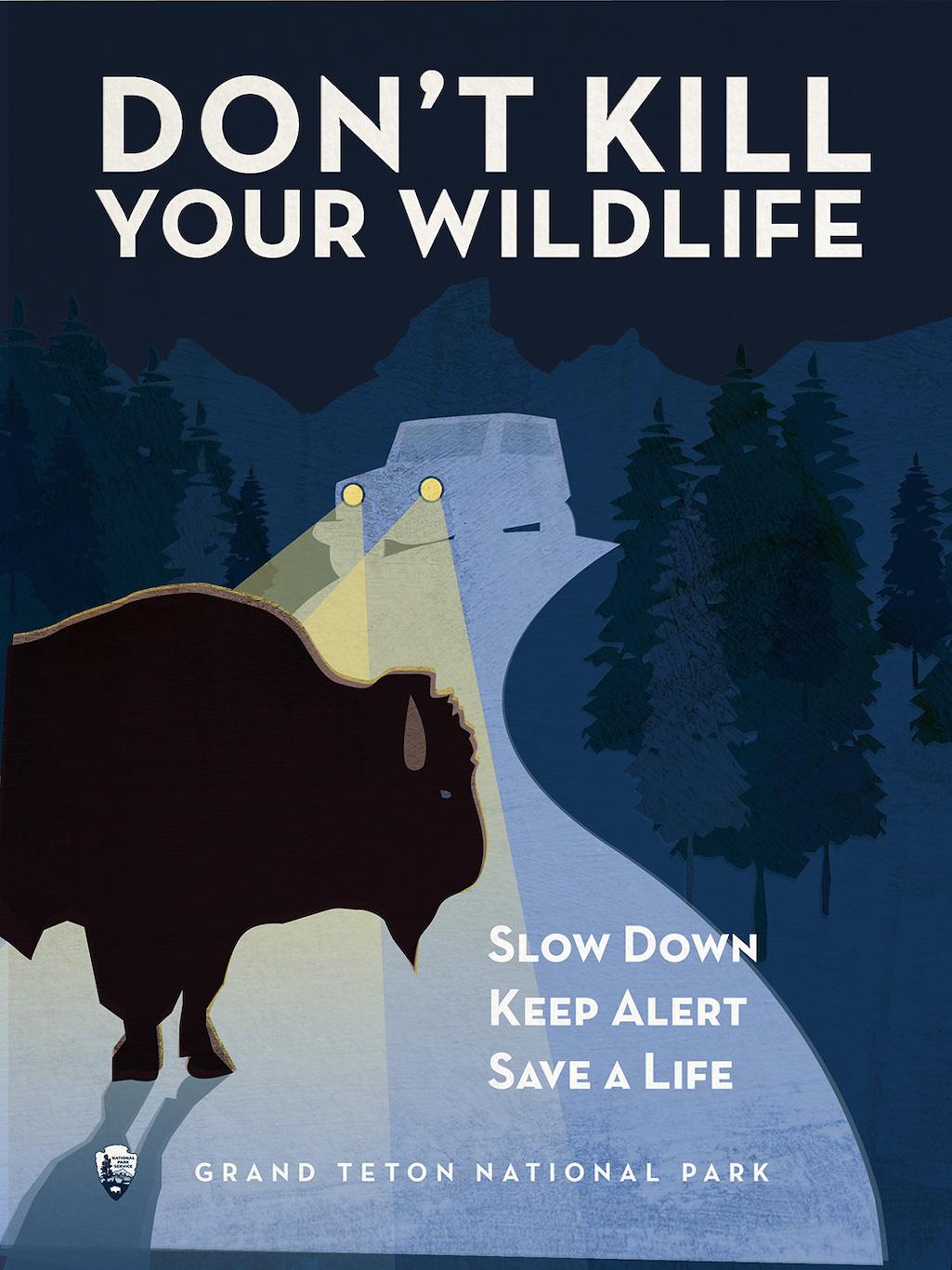
Grand Teton National Park visitors need to drive especially carefully after dark/NPS
Grand Teton National Park officials want visitors and local residents to drive carefully through the park, especially after dark when it's difficult to see wildlife crossing roads.
In the last two weeks alone, five bison, one elk, one mule deer, one pronghorn, one coyote and one wolf pup were hit and killed by vehicles traveling on park roads, staff said in a release.
Seeing wildlife in their natural habitat is one of the many unique opportunities that make Grand Teton a special, awe-inspiring place. Motorists can do their part to protect and preserve these animals by slowing down and using caution while driving.
For many animals, fall is a time of migration, which means animals may be more active near park roadways and can cross the roads unexpectedly. Days become shorter as fall transitions to winter. Drivers should use caution and slow down, especially at dawn, dusk, and during the night when visibility is reduced.
Visitors and local residents should obey posted speed limits and maintain a safe following distance from other vehicles. Please follow the nighttime speed limit of 45 miles per hour on U.S. Highway 26/89/191. The reduced speed limit gives drivers and wildlife more time to react.
In addition, drivers should pay close attention while driving on park roads. Many animals are good at hiding along roadsides and it is important to be aware that animals are around, even when you do not see them. Speeding is not the only cause of wildlife collisions. Park wildlife are often hit because drivers are not paying attention to their surroundings.
When an animal is hit, wildlife management staff are sent to respond. Depending on the circumstances, this pulls staff members away from their other duties for a considerable amount of time in order to perform carcass removal, biological sampling, and clean up. This directly impacts park staff’s ability to protect other wildlife.
Around 75—100 large animals are hit by vehicles annually in Grand Teton. You can save a life by slowing down, driving 45 at night and being alert on park roads.



Comments
I am curious to know if the animal strikes occur at or near the same locations.
Years ago I attended a campfire presentation by a park ranger at Grand Teton. He advised us that it would be better to go even slower than the posted speed limits to reduce the chance of hitting wildlife. We also had a coyote visit the amphitheater before it started.
I find traveling through the Park on Highway 89 at the speed limit to be a lonely experience because most vehicles are passing me. The NPS and other law enforcement in the area never run radar traps to catch and slow down speeders. Why not try radar enforcement?
We were in Teton and Yellowstone Parks late August and early September and I couldn't believe the traffic and the animals that crossed the road right in front of our car. A herd of Bison and big horned sheep, 2 black bears at different times, numerous deer at different times and a grizzly bear. I wouldn't even go the speed limit because I was afraid of hitting something. Lots of other drivers didn't seem to be worried. I can't even imagine driving through the park at dusk or later. It was beautiful and we need to remember that we're in their territory and we're supposed to be the educated ones.
I agree with you, We were in the park and Yellowstone the middle of October for 10 days, we always do the speed limit in National Parks, we were passed many times! Drivers flashing their lights behind us and tail gating, passing us and speeding way past us. It's very frustrating to see them just getting away with that, why come if you just want to speed through the park. They need to do more, besides just signs to slow, because a lot of people think they don't have to follow the rules there!